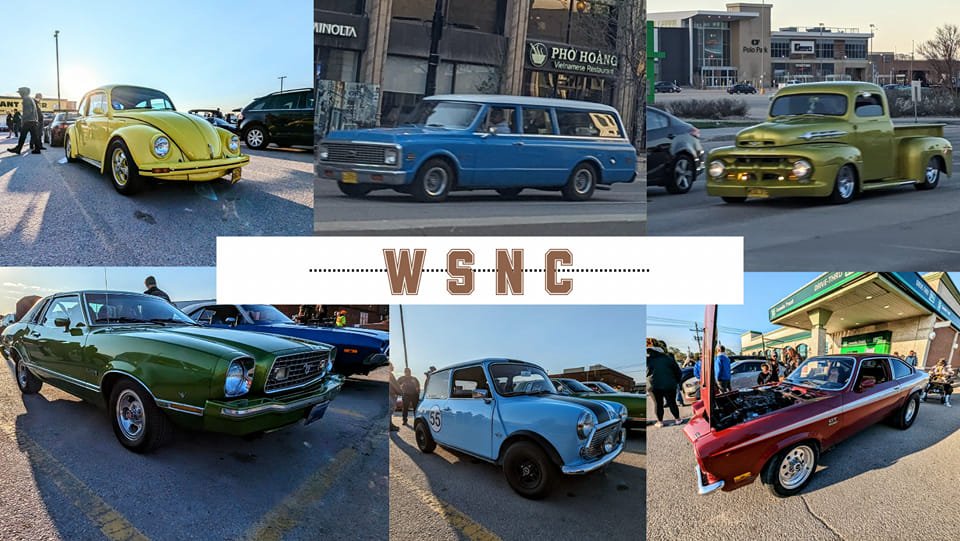The Origins of Winnipeg’s Sunday Night Cruise
The history of Winnipeg’s Sunday Night Cruise dates back to the early 1970s, a period marked by a burgeoning car culture and a growing sense of community among automobile enthusiasts. At its core, the event began as an informal gathering of like-minded individuals who shared a passion for classic cars and hot rods. The idea was simple yet effective: cruise down Portage Avenue, show off their vehicles, and enjoy the company of fellow car aficionados.
In the beginning, the Sunday Night Cruise was a grassroots movement with no official organization or endorsement. It was a spontaneous event that gained traction primarily through word of mouth.
These early adopters were driven by a desire to display their mechanical prowess and unique modifications, making the cruise an exciting showcase of automotive creativity.
The social and cultural context of the time played a significant role in the cruise’s rapid rise in popularity. The 1970s were a time of economic growth and a burgeoning youth culture, both of which contributed to the allure of car ownership and customization. The Sunday Night Cruise provided a unique platform for this demographic to express their individuality and socialize in a relaxed, open environment.
As the event grew, it began to attract the attention of the general public. Families, tourists, and casual observers flocked to Portage Avenue to witness the spectacle. The combination of impressive vehicles, the camaraderie among participants, and the festive atmosphere made the Sunday Night Cruise a beloved tradition in Winnipeg, setting the stage for its evolution in the decades to come.
How the Cruise Evolved Over the Decades
Technological advancements have also played a crucial role in the evolution of the Sunday Night Cruise. The advent of social media and online forums enabled greater coordination and communication among participants, leading to larger turnouts and more organized events. Car enthusiasts could share their modifications, arrange meet-ups, and create a sense of community that transcended geographic boundaries. The integration of modern technology into the vehicles themselves, such as advanced sound systems and custom lighting, added new dimensions to the cruise experience.
Over the years, the route of the cruise has shifted to accommodate the growing number of participants and changes in city infrastructure. Initially confined to a few main streets, the route expanded to include scenic drives and notable landmarks around Winnipeg, enhancing the event’s appeal. These changes were often driven by the need to manage traffic flow and ensure the safety of both participants and spectators.
Memorable cruises and notable incidents have become part of the event’s lore. Stories of unexpected downpours, impromptu street performances, and celebrity appearances have added to the cruise’s rich history. However, the event has not been without challenges. Issues such as noise complaints, traffic congestion, and the occasional unruly behavior have sparked controversies. Organizers and the community have addressed these challenges through increased regulation, collaboration with local authorities, and efforts to promote responsible participation.
Overall, the Sunday Night Cruise has grown from a niche gathering to a significant cultural phenomenon in Winnipeg. Its evolution reflects broader trends in car culture and community engagement, illustrating how a simple pastime can develop into a cherished tradition over decades.
The Cultural Significance of the Sunday Night Cruise
The Sunday Night Cruise has become a staple in the cultural fabric of Winnipeg, offering a unique blend of community interaction, historical preservation, and social networking. This weekly event provides a platform for car enthusiasts to gather, showcasing their meticulously maintained classic cars, and for spectators to appreciate a living museum of automotive history. The cruise has a significant role in fostering a sense of community among participants and onlookers alike, creating a shared space where stories and experiences are exchanged.
One of the most profound impacts of the Sunday Night Cruise is its ability to preserve and promote interest in classic cars. Enthusiasts invest considerable time and effort in restoring these vehicles, and the cruise offers them an opportunity to share their passion with a broader audience. This, in turn, helps to keep the history of automotive innovation alive, inspiring future generations of car lovers. According to long-time participant John Smith, “The cruise is not just about the cars; it’s about the people and the stories behind each vehicle. It’s a celebration of our shared heritage.”
Beyond the cars and the history, the social aspects of the Sunday Night Cruise are equally significant. The event serves as a social hub, where relationships and networks are formed and nurtured. Participants often form lasting friendships, bonded by their mutual interest in classic cars. These relationships extend beyond the confines of the cruise, contributing to a robust and supportive community.
Additionally, the Sunday Night Cruise has a notable influence on local businesses and tourism. The influx of participants and spectators generates economic activity, benefiting nearby restaurants, shops, and service providers. This event not only boosts the local economy but also attracts visitors from outside the city, further enhancing Winnipeg’s reputation as a destination for cultural and historical events.
In essence, the Sunday Night Cruise is more than just a cruise night; it is a dynamic cultural phenomenon that enriches the Winnipeg community through its celebration of automotive history, its facilitation of social connections, and its positive economic impact.
The cruise continues to thrive, reflecting the enduring appeal and significance of this beloved tradition.

